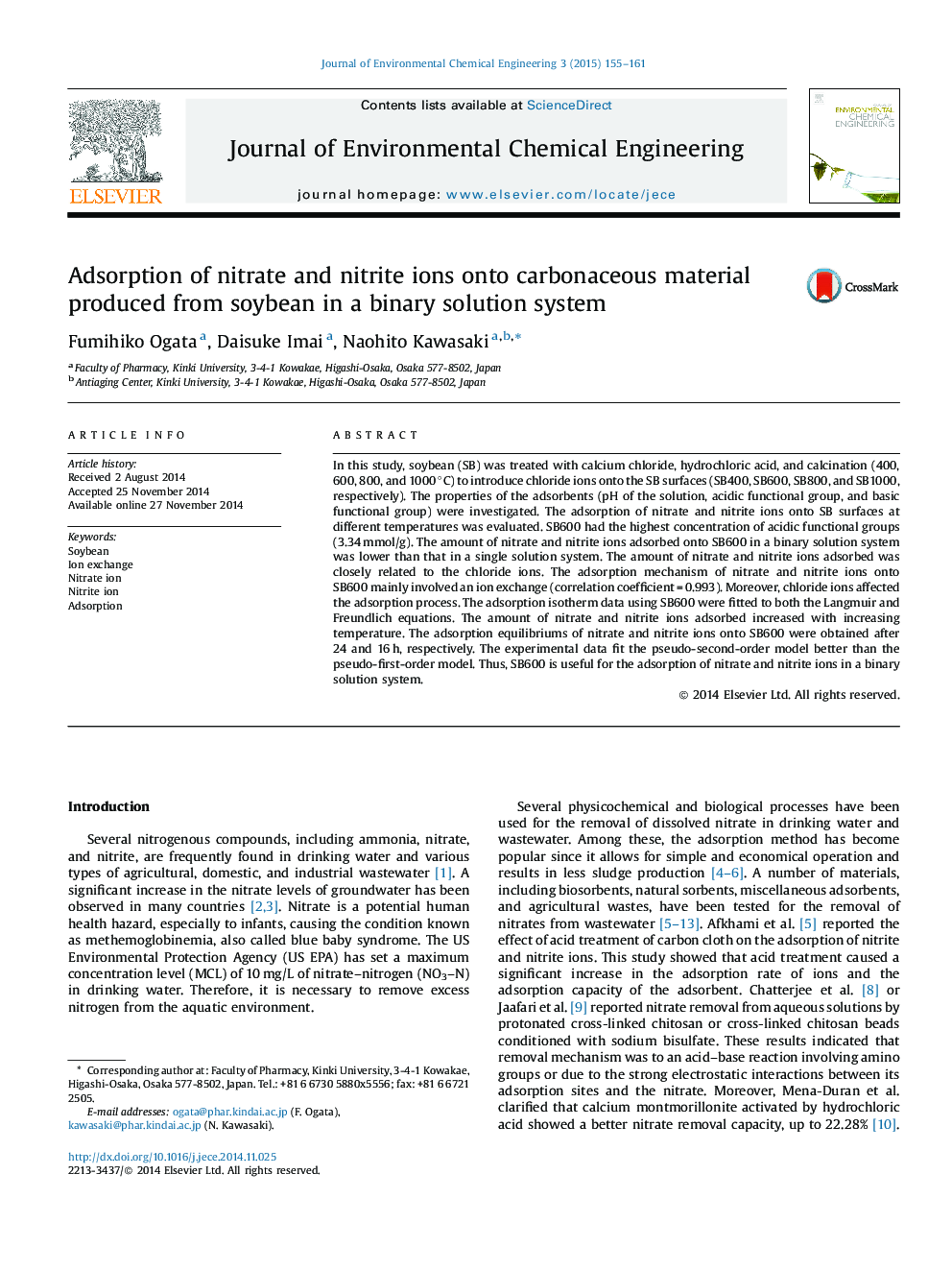| Article ID | Journal | Published Year | Pages | File Type |
|---|---|---|---|---|
| 222395 | Journal of Environmental Chemical Engineering | 2015 | 7 Pages |
•Soybean was treated with calcium chloride, hydrochloric acid, and calcination.•Adsorption mechanism of nitrate and nitrite ions mainly involved an ion exchange.•Amount of nitrate and nitrite ions adsorbed increased with increasing temperature.
In this study, soybean (SB) was treated with calcium chloride, hydrochloric acid, and calcination (400, 600, 800, and 1000 °C) to introduce chloride ions onto the SB surfaces (SB400, SB600, SB800, and SB1000, respectively). The properties of the adsorbents (pH of the solution, acidic functional group, and basic functional group) were investigated. The adsorption of nitrate and nitrite ions onto SB surfaces at different temperatures was evaluated. SB600 had the highest concentration of acidic functional groups (3.34 mmol/g). The amount of nitrate and nitrite ions adsorbed onto SB600 in a binary solution system was lower than that in a single solution system. The amount of nitrate and nitrite ions adsorbed was closely related to the chloride ions. The adsorption mechanism of nitrate and nitrite ions onto SB600 mainly involved an ion exchange (correlation coefficient = 0.993). Moreover, chloride ions affected the adsorption process. The adsorption isotherm data using SB600 were fitted to both the Langmuir and Freundlich equations. The amount of nitrate and nitrite ions adsorbed increased with increasing temperature. The adsorption equilibriums of nitrate and nitrite ions onto SB600 were obtained after 24 and 16 h, respectively. The experimental data fit the pseudo-second-order model better than the pseudo-first-order model. Thus, SB600 is useful for the adsorption of nitrate and nitrite ions in a binary solution system.
